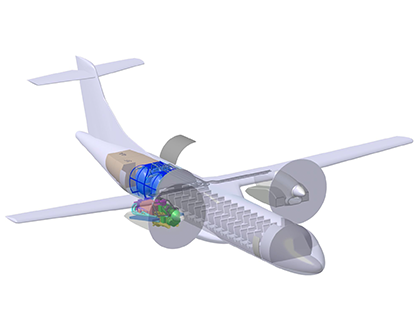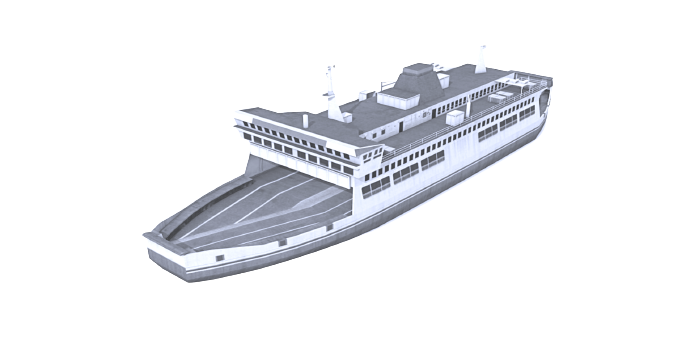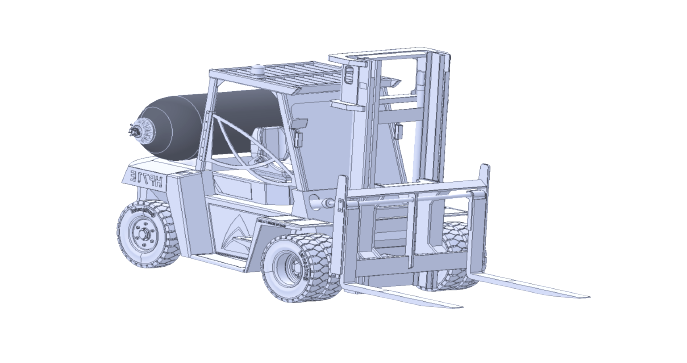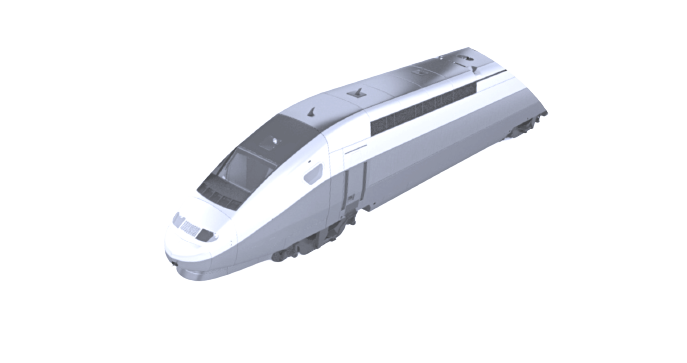Regional Aircraft
Our first product is a conversion kit for existing regional aircraft, starting with the ATR72 and the De Havilland Canada Dash-8, to fly on hydrogen. This consists of a fuel cell electric powertrain that replaces the existing turboprop engines. It also accommodates, in the rear of the fuselage, our proprietary, lightweight, modular hydrogen capsules that are transported from green hydrogen production sites to the airport and loaded directly into the aircraft using the existing intermodal freight network and cargo handling equipment. By providing both an aircraft conversion solution for the existing fleet and a fuel services offering directly to regional airlines, we will be in passenger service with zero emissions by 2025 and in cargo service shortly thereafter.

Single Aisle / Narrowbody
The majority of aviation emissions are produced by the single aisle (also known as narrowbody) fleet, dominated by the Boeing 737 and Airbus A320 families of aircraft. Both Boeing and Airbus are likely to develop a replacement for these venerable models for entry into service in the mid 2030s. The only way aviation can meet Paris Agreement emissions targets is if the new single aisle airplanes are hydrogen powered. We are committed to helping make it so by providing a global hydrogen distribution network that delivers green hydrogen to any commercial airport in the world at a cost far below that of jet fuel. Our regional product will provide an irrefutable proof point that green hydrogen is feasible, affordable, safe, and welcomed by passengers—in time to ensure that the new single aisle is a true zero carbon emissions airplane. A hydrogen single aisle does not need to be a radical new design. Accommodating enough hydrogen for transatlantic range without sacrificing passenger capacity would add 9 meters to the length of a conventional A321 fuselage, still keeping it shorter than the 757-300. It can be a tube-and-wings airplane with a hydrogen-burning jet engine and a modest fuselage stretch housing modular fuel capsules and giving the airplane trans-continental or transatlantic range capability.
Urban Air Mobility / eVTOL
While most urban air mobility / electric vertical take-off and landing (eVTOL) aircraft under development are powered by lithium-ion batteries, a hybrid battery-fuel cell powertrain—with the fuel cell providing power for the entire mission and the battery augmenting the fuel cell during hover—provides dramatic improvements in range, weight, and volume. Our modular fuel distribution approach is especially well-suited to urban air mobility applications with flexible basing and/or large numbers of vertiports, since it does not require any fixed fuel infrastructure and allows for rapid replacement of fuel modules on the aircraft.

Other Transportation Applications
Our lightweight, aviation-grade modular hydrogen capsules can be used in a wide range of transportation applications where weight, safety, and speed of refueling are important. We are working with partners in automotive, heavy equipment, maritime, and railroad domains. If you have an application that can benefit from our global modular green hydrogen distribution network, please get in touch!



